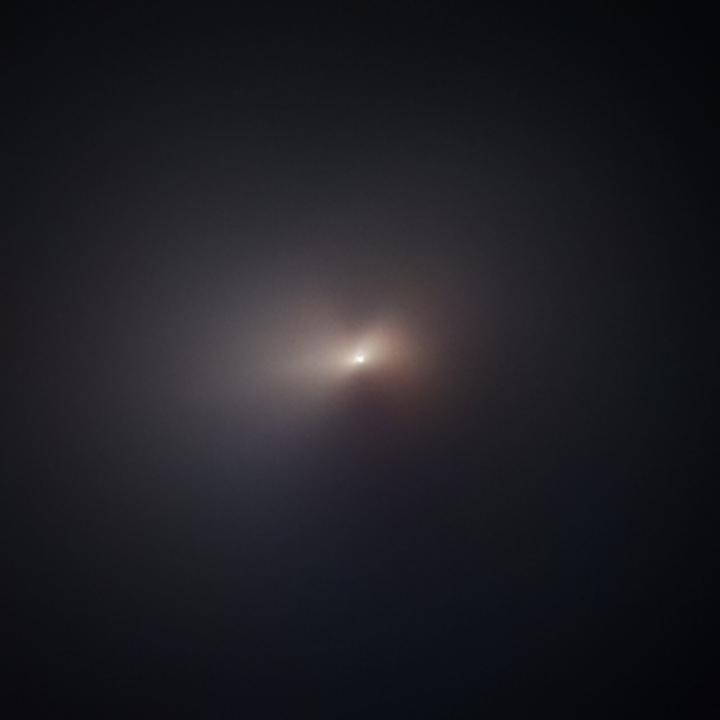
Credit: NASA, ESA, Q. Zhang (California Institute of Technology), A. Pagan (STScI)
The NASA/ESA Hubble Space Telescope has captured the closest images yet of the sky’s latest visitor to make the headlines, comet C/2020 F3 NEOWISE, after it passed by the Sun. The new images of the comet were taken on 8 August and feature the visitor’s coma, the fine shell that surrounds its nucleus, and its dusty output.
Comet NEOWISE is the brightest comet visible from the Northern Hemisphere since 1997’s Hale-Bopp comet. It’s estimated to be travelling at over 60 kilometres per second. The comet’s closest approach to the Sun was on 3 July and it’s now heading back to the outer reaches of the Solar System, not to pass through our neighbourhood again for another 7000 years.
Hubble’s observation of NEOWISE is the first time a comet of this brightness has been photographed at such high resolution after its pass by the Sun. Earlier attempts to photograph other bright comets (such as comet ATLAS) proved unsuccessful as they disintegrated in the searing heat.
Comets often break apart due to thermal and gravitational stresses at such close encounters, but Hubble’s view suggests that NEOWISE’s solid nucleus stayed intact. This heart of the comet is too small to be seen directly by Hubble. The ball of ice may be no more than 4.8 kilometres across. But the Hubble image does captures a portion of the vast cloud of gas and dust enveloping the nucleus, which measures about 18 000 kilometres across in this image.
Hubble’s observation also resolves a pair of jets from the nucleus shooting out in opposite directions. They emerge from the comet’s core as cones of dust and gas, and then are curved into broader fan-like structures by the rotation of the nucleus. Jets are the result of ice sublimating beneath the surface with the resulting dust/gas being squeezed out at high velocity.
The Hubble photos may also help reveal the colour of the comet’s dust and how that colour changes as the comet moves away from the Sun. This, in turn, may explain how solar heat affects the contents and structure of that dust and the comet’s coma. The ultimate goal here would be to determine the original properties of the dust. Researchers who used Hubble to observe the comet are currently delving further into the data to see what they’re able to find.
Hubble has captured other well-known comet visitors throughout the past year. This includes snapping images of the breakup of comet ATLAS in April 2020 and impressive images of the interstellar comet 2I BORISOV in October 2019 and December 2019.
###
More information
The Hubble Space Telescope is a project of international cooperation between ESA and NASA.
Image credit: NASA, ESA, Q. Zhang (California Institute of Technology), A. Pagan (STScI)
Links
- Images of Hubble
- Hubblesite release
Bethany Downer
ESA/Hubble, Public Information Officer
Garching, Germany
Email: [email protected]
Media Contact
Bethany Downer
[email protected]
Original Source
http://www.




